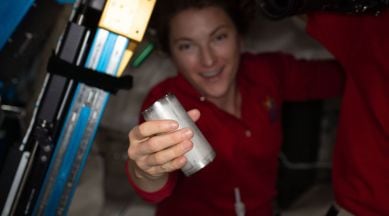International Space Station achieves landmark 98% recovery of water from urine, sweat
The International Space Station is now capable of recovering 98 per cent of the water on board, from the astronauts' urine, perspiration, and breath.

Water is a vital resource and it becomes especially scarce when you are orbiting more than 400 kilometres above the planet. NASA announced that it was able to recover nearly 98 per cent of the water brought to the International Space Station (ISS) by the crew—by recycling their urine and sweat.
The Environmental Control and Life Support System (ECLSS) on the space station recently demonstrated that it can achieve the significant goal of 98 per cent water recovery, according to NASA. ECLSS consists of a Water Recovery System that collects wastewater and sends it to the Water Processor Assembly, (WPA) which produces drinkable water. One part of the system used dehumidifiers to capture the moisture released into the cab from the crew’s breath and sweat.
The Urine Processor Assembly, (UPA) another part of the system, recovers water from urines using vacuum distillation. In an earlier version of the technology, the distillation assembly produced water and a concentrated “urine brine” that still contained some reclaimable water. Recently, a Prine Processor Assembly (BPA) was added to extract this remaining wastewater.
This assembly helped the system achieve the 98 per cent goal. According to Killiam Williamson, ECLSS water systems manager, total water recovery was between 93 per cent and 94 per cent overall before installation of BPA.
The BPA takes brine produced by the UPA and runs it through a special membrane. It then blows warm, dry air over the brine to evaporate the water. This process creates humid air that is then collected by the station’s water collection systems, just like from the crew’s sweat and breath.
After the water is collected, it is run through a series of specialised filters. After that, it is run through a catalytic reactor that breaks down any trace contaminants that remain. The water’s purity is checked by sensors and any unacceptable water is reprocessed. Then, the system adds iodine to prevent microbial growth and stores the water for the crew’s use.